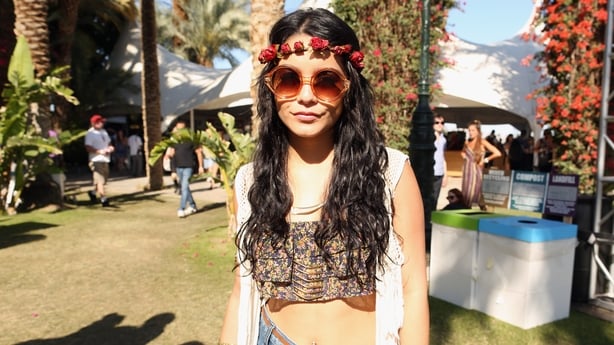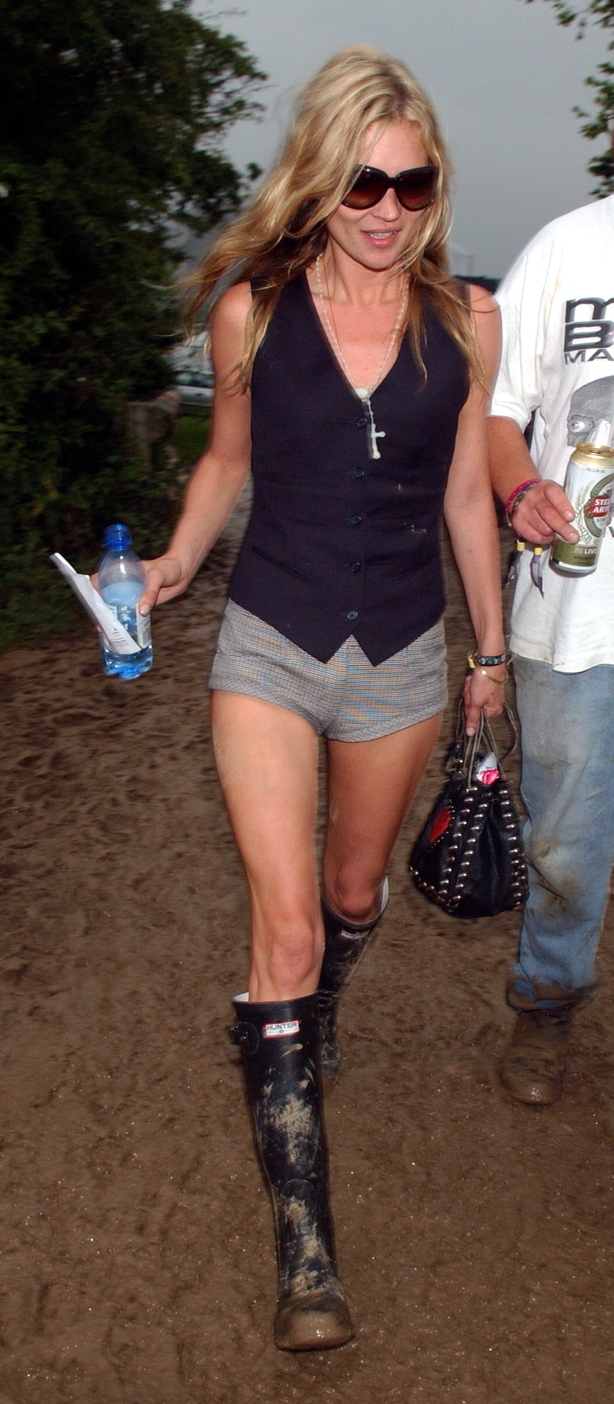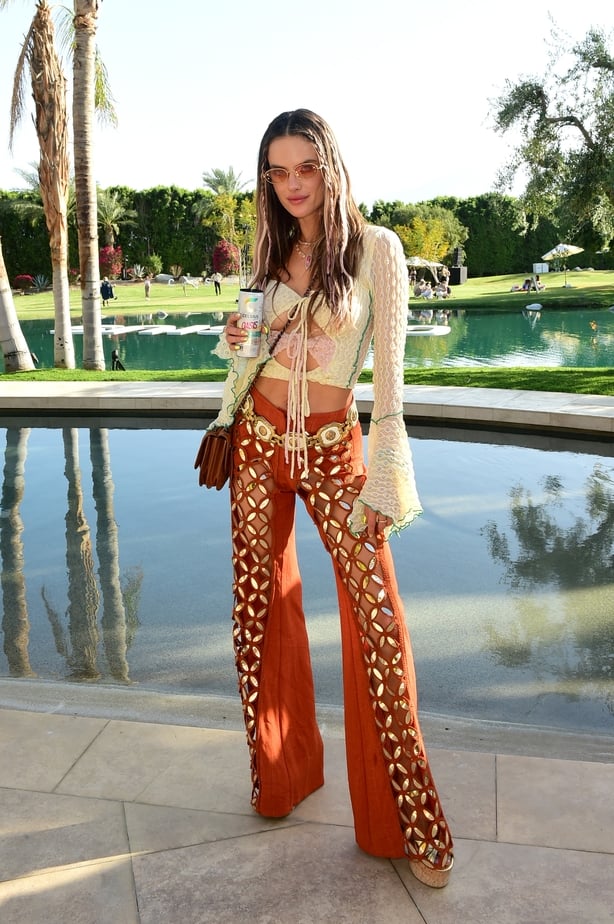When we think of festival fashion, the first image that probably materialises is a boho maxi skirt, fringed jacket, flower crown, glitter face makeup and lashings of layered jewellery.
It's a formula replicated time and time again by celebrities, influencers and "regular folk" alike ever since social media became an intrinsic part of the festival experience.

For those of us who have never set a dusty, cowboy boot-clad foot on the desert valley of Coachella or gotten a welly stuck in the mud at Glastonbury, we can take part in the experience via our smartphones as attendees broadcast every moment of the weekend, from complaining about the morning shower queues to the performances and headline acts, via their preferred online platform.
Music festivals are far from a modern concept. The earliest iteration of people gathering for such an event being the Pythian Games, a precursor of the Olympics, which was held in ancient Greece from around 600BC as a celebration of musical, debate and athletic prowess in honour of Apollo, God of music and the arts, among other things.
While we still gather to frolic and immerse ourselves in the arts, good company and realistically, a few beverages, a whole new aspect has emerged as the festival audience itself now has an audience numbering in the collective millions online.

Wellies and waistcoats
Up until just a few years ago, there were no expectations or preconceived trends to go off, and celebrities mostly rocked what everyone else did - band t-shirts, denim shorts, jeans with mud, caked to the bottom, tea dresses paired with wellies or, if you were festival queen Kate Moss, tiny metallic waistcoats, casual vest tops and Hunter wellington boots.
With the increased popularity of social media influencers and blanket coverage of events via social media, the aesthetics began to change to a more maximalist approach. This allowed content creators to stand out in the crowds - until those very crowds began adopting the look for themselves.
This is how we’ve arrived at the looming flower-crowned spector that comes to mind now at the mere utterance of the words "festival fashion", like some kind of sartorially challenged Bloody Mary.

Fashion Tribes
There are three distinctive fashion tribes at festivals like Coachella, which has just closed its first weekend of two. Outside of regular, paying attendees, we have the performers, the celebrities, and the influencers, each with their own distinct defining style characteristics.
The performers are easily spotted, and take to the stage in a desert-friendly version of their usual performance wear. For example this year the queen of eccentricity Bjork wore a number of intricate outfits by Japanese designer Kei Ninomiya, which made the singer look as though she was encased in fungal mycelium (in a good way), while sad pop girlie Billie Eilish wore a version of her go-to uniform of baggy clothes in a black, paint-splattered puffer jacket and casual black cap, perfect for the dropping temperatures of the desert at night time.

Elsewhere, celebs are looking more lowkey and understated, a throwback to the original days of celebrity style-spotting. Headliner Frank Ocean, while being a performer and closing the show this weekend, crossed over into the territory of celebrity attendee with his chosen outfit: a simple blue parka coat and what looked to be furry slippers or sandals.
Complicating this, of course, is the ever-present work of celebrity stylists – no "off-duty" look is truly off-duty.
There has been much debate about why celebrities have dramatically dimmed their penchant for elaborate, maximalist outfits for Coachella this year. There are a medley of reasons, but one that stands out is a possible attempt to distinguish themselves from influencers in attendance.

Influencer Olympics
Now, influencers are taking up the torch laid down by celebrities, white-knuckling the scorching heat of the desert and miles of walking in extravagant outfits that pay homage to current trends while incorporating classic festival fashion elements.
Coachella is one of the biggest events of the year, with many people going just to be seen - some social media stars are driving out to the desert to take photos of their outfits and then heading home, not even attending the festival for long at all.
As the festival grew, it became more brand-led and sponsorship-heavy, which is where the influencers come in.
Dubbed by fashion and culture critics as the 'Influencer Olympics', there is an element of the original Pythian Games here, as style bloggers and influencers compete to create the best outfits for engagement and to share their love of style with a wider audience who are tuning in to look at who is attending the weekend and get some inspiration for their own future festival looks.
TikTok’s current it-girl Alix Earle, who boasts five million followers on the video platform and an additional two and a half million on Instagram, was the queen of influencer style at Coachella this year, decked out in looks by Guess who brought the social media savvy university student to the festival.
She closed out her time at the festival in a white lace top, green floaty midi skirt, chunky belt and miniscule little waistcoat barely detectable under her sheet of blonde curls. Her looks were the perfect example of achievable, shoppable festival style while still going all out in a cohesive, well-planned suite of outfits completed by full glam makeup and perfect hair.
Meanwhile, festival favourite Emma Chamberlain went down the vintage route, her stylist pulling looks from online Depop and vintage stores to create Emma’s utility-inspired looks, including a denim mini dress with red creeper shoes - a throwback to the 2010s that I don’t think anyone is ready to talk about - and miniature blue sunglasses.
These outfits will no doubt make their way onto fans’ Pinterest boards, then into the collections of fashion houses. The industry grinds on, with a new self-generating source of inspiration.
On top of this, many of the looks created by influencers at festivals are sponsored, with tickets to said festival exchanged for advertising of their wares in the form of outfit posts and recommendations.
Revolve Festival is a great example of this - an invite-only event set in tandem with Coachella where stars and influencers get to attend an amazing party dressed to the nines in the brand’s e-commerce back catalogue of stylish pieces.
We follow influencers because we like them, and we buy things they promote because we trust them, and that parasocial relationship is the driving force behind wanting to emulate them.
With Coachella happening so early in the year compared to most music festivals that take place in the summer, Coachella often sets the tone and the trends for what we will see in the "festival fashion" sections of fast fashion websites in the coming weeks.
The very existence of these sections combined with the types of outfits we see running around fields across the country over the summer proves just how much we have turned our gaze to online fashionistas for inspiration.
Sustainable steps forward
While celebs might have designer bikinis or bags the equivalent price of a small house, these items are not as coveted by your average consumer as they don’t feel within reach.
However, the online saturation of festival fashion can lead to an urge to shop to ensure we look appropriate for the occasion, leading us to buy more pieces we may arguably never wear again.
This is not a fair expectation to place on ourselves when influencers and the brands they promote are so intrinsically linked, and there is a mutually beneficial relationship between them.
Of course, there is nothing wrong with buying a piece that your favourite Instagrammer inspired you to find, but the sometimes omnipresent feeling that you have to buy a special festival look is an issue.
A more interesting challenge this festival season would be to look at your style icon’s festival photos and take inspiration, for sure, but build out of your own wardrobe or shop sparingly and considerately based on what you see on screen, leaving the modern-day fashion Pythian Games to the experts and choosing pieces we love, rather than ones that have been funnelled into a "festival edit."


